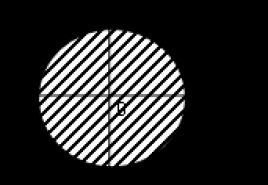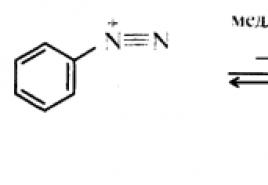Our natural satellite is the moon. Relief of the Moon
The Moon is the celestial body closest to Earth and therefore the best studied. The closest planets to us are about 100 times farther than the Moon. Moon smaller than Earth four times in diameter and 81 times in mass. Its average density is , i.e., less than that of the Earth. The Moon probably does not have such a dense core as the Earth does.
We always see only one hemisphere of the Moon, on which neither clouds nor the slightest haze are ever noticeable, which served as one of the proofs of the absence of water vapor and atmosphere on the Moon. This was later confirmed by direct measurements on the lunar surface. The sky on the Moon, even during the day, would be black, as if in airless space, but the thin shell of dust surrounding the Moon slightly scatters sunlight.
There is no atmosphere on the Moon that softens the scorching rays of the sun, does not allow X-ray and corpuscular radiation from the Sun, which is dangerous for living organisms, to reach the surface, reduces the release of energy into space at night and protects against cosmic rays and streams of micrometeors. There are no clouds, no water, no fogs, no rainbows, no sunrise. The shadows are sharp and black.
With the help of automatic stations, it has been established that continuous impacts of small meteorites, crushing the surface of the Moon, seem to grind it down and smooth out the relief. Small fragments do not turn into dust, but under vacuum conditions they quickly sinter into a porous slag-like layer. Molecular adhesion of dust occurs into something like pumice. This structure of the lunar crust gives it low thermal conductivity. As a result, with strong fluctuations in temperature outside in the bowels of the Moon, even at shallow depths, the temperature remains constant. Huge differences in temperature of the lunar surface from day to night are explained not only by the absence of an atmosphere, but also by the duration lunar day and the lunar night, which corresponds to our two weeks. The temperature at the subsolar point of the Moon is +120 °C, and at the opposite point of the night hemisphere - 170 °C. This is how the temperature changes during one lunar day!
2. Relief of the Moon.
Already since the time of Galileo, maps of the visible hemisphere of the Moon began to be compiled. Dark spots on the surface of the Moon were called “seas” (Fig. 47). These are lowlands where there is not a drop of water. Their bottom is dark and relatively flat. Most of the surface of the Moon is occupied by mountainous, lighter spaces. There are several mountain ranges called, like those on Earth, the Alps, the Caucasus, etc. The height of the mountains reaches 9 km. But the main form of relief are craters. Their ring ridges, up to several kilometers high, surround large circular depressions up to 200 km in diameter, such as Clavius and Schiccard. All large craters are named after scientists. So, on the Moon there are craters Tycho, Copernicus, etc.

Rice. 47. Schematic map of the largest features on the hemisphere of the Moon facing the Earth.
On the full moon southern hemisphere The Tycho crater with a diameter of 60 km in the form of a bright ring and radially light rays diverging from it are clearly visible through strong binoculars. Their length is comparable to the radius of the Moon, and they stretch across many other craters and dark depressions. It turned out that the rays were formed by a cluster of many small craters with light walls.
It is better to study the lunar relief when the corresponding terrain lies near the terminator, i.e., the border of day and night on the Moon. Then the slightest irregularities, illuminated by the Sun from the side, cast long shadows and are easily noticeable. It is very interesting to watch through a telescope for an hour how light points light up near the terminator on the night side - these are the tops of the shafts of lunar craters. Gradually, a light horseshoe emerges from the darkness - part of the crater rim, but the bottom of the crater is still immersed in

Rice. 48. Schematic map of the far side of the Moon, invisible from Earth.
complete darkness. The rays of the Sun, sliding lower and lower, gradually outline the entire crater. It is clearly seen that the smaller the craters, the more there are. They are often arranged in chains and even “sit” on top of each other. Later craters formed on the shafts of older ones. A hill is often visible in the center of the crater (Fig. 49), in fact it is a group of mountains. The crater walls end in terraces steeply inward. The floor of the craters lies below the surrounding terrain. Take a close look at the inside of the shaft and the central hill of the Copernicus crater, photographed from the side by the artificial satellite of the Moon (Fig. 50). From Earth, this crater is visible directly from above and without such details. In general, craters up to 1 km in diameter are barely visible from Earth under the best conditions. The entire surface of the Moon is pitted with small craters - gentle depressions - this is the result of impacts of small meteorites.
Only one hemisphere of the Moon is visible from Earth. In 1959, the Soviet space station, flying past the Moon, photographed for the first time the lunar hemisphere invisible from Earth. It is not fundamentally different from the visible one, but there are fewer “sea” depressions on it (Fig. 48). Now compiled detailed maps this hemisphere based on numerous photographs of the Moon taken from close range automatic stations, sent to the Moon. Artificially created devices repeatedly fell onto its surface. In 1969, he first landed on the surface of the Moon spacecraft with two American astronauts. To date, several expeditions of US astronauts have visited the Moon and returned safely to Earth. They walked and even drove a special all-terrain vehicle on the surface of the Moon, installed and left various devices on it, in particular seismographs for recording “moonquakes,” and brought back samples of lunar soil. The samples turned out to be very similar to terrestrial rocks, but they also revealed a number of features characteristic only of lunar minerals. Soviet scientists obtained samples of lunar rocks from different places using automatic machines, which, on command from the Earth, took a soil sample and returned to Earth with it. Moreover, Soviet lunar rovers (automatic self-propelled laboratories, Fig. 51) were sent to the Moon, which performed many scientific measurements and soil analyzes and traveled significant distances on the Moon - several tens of kilometers. Even in those places on the lunar surface that look smooth from Earth, the soil is replete with craters and strewn with rocks of all kinds of sizes. The lunar rover “step by step”, controlled from the Earth by radio, moved taking into account the nature of the terrain, the view of which was transmitted

Circus Alphonse, in which the release of volcanic gases was observed (the picture was taken by an automatic station near the Moon).
(click to view scan)
to Earth on television. This greatest achievement of Soviet science and humanity is important not only as proof of the unlimited capabilities of the human mind and technology, but also as a direct study of the physical conditions on another celestial body. It is also important because it confirms most of the conclusions that astronomers made only from analyzing the light of the Moon coming to us from a distance of 380,000 km.
The study of lunar relief and its origin is also interesting for geology - the Moon is like a museum ancient history its crust, since water and wind do not destroy it. But the Moon is not a completely dead world. In 1958, Soviet astronomer N.A. Kozyrev noticed the release of gases from the lunar interior in the Alphonse crater.
Both internal and external forces apparently took part in the formation of the lunar relief. The role of tectonic and volcanic phenomena is undeniable, since on the Moon there are fault lines, chains of craters, a huge table mountain with slopes the same as those of the craters. There are similarities between lunar craters and lava lakes of the Hawaiian Islands. Smaller craters were formed by impacts of large meteorites. There are also a number of craters on Earth formed by meteorite impacts. As for the lunar “seas,” they are apparently formed by the melting of the lunar crust and the outpouring of lava from volcanoes. Of course, on the Moon, as on Earth, the main stages of mountain formation occurred in the distant past.
Numerous craters discovered on some other bodies of the planetary system, for example on Mars and Mercury, should have the same origin as those on the Moon. Intensive crater formation is apparently associated with low gravity on the surface of the planets and with the rarefaction of their atmosphere, which does little to mitigate the bombardment of meteorites.
Soviet space stations established the absence of the Moon magnetic field and radiation belts and the presence of radioactive elements on it.
Dark spots can be seen on the Moon with the naked eye. Through binoculars, or even better through a telescope, their outlines appear more clearly. These are vast plains on the lunar surface. The first observers who looked at the Moon through a telescope mistook them for bodies of water and called them seas. But there is no water or ice on the moon. If they were ever there, they had long since evaporated and disappeared into space. This is explained by the fact that gravity on the Moon is 6 times less than on Earth. The moon could not hold any significant amount of water vapor and gases near itself for a long time.
The fact that there is no noticeable atmosphere on the Moon can be seen by observing how suddenly, without any dimming, a star disappears when it is covered by the Moon moving across the sky. The shadows of the mountains on the Moon are sharply defined.
Because there is no atmosphere on the moon, then there cannot be any wind on it. There is a constantly cloudless black sky, on which the stars shine even in the bright sun. The blue color of the sky on Earth comes from the air. By scattering the sun's rays, it prevents us from seeing the stars during the day, as it makes the background of the entire sky brighter than the stars.
Due to the absence of an atmosphere, the scorching rays of the Sun during the lunar day can raise surface temperatures Moon up to plus 120?; but after sunset the temperature quickly drops and reaches minus 160°C at night.
Since there is no water or air on the Moon, its surface does not erode or erode. Various irregularities on the lunar surface - its mountains and depressions - are best visible around the first and last quarter, when the obliquely falling rays of the sun create elongated shadows there. From these shadows, scientists measured the height of the lunar mountains: some of them reach 7000 m.
They give a lot for studying the surface Moon photographs taken from high magnification. On them you can see a wide dark plain, which was called the Sea of Rains, and along its edges are chains of mountains and individual ring mountains. Another part of the surface Moon completely covered with ring mountains and craters of various sizes. The diameter of the largest of them reaches 200 km.
But how could large craters or huge plains bordered by mountain chains be formed? Science has not yet finally resolved this question. Russian geologist A.P. Pavlov believed that once hot masses broke through selected places from the depths Moon to the surface and formed molten lakes and seas. Volcanic magma gradually solidified, piling up hardened rocks at the edges. In the middle of these spaces, the surface dropped somewhat, forming vast plains.
Some scientists believe that the craters could have been formed as a result of huge meteorites falling on the Moon.
In addition to the vast plains, mountain ranges and numerous ring mountains covering the surface, the photograph Moon you can see cracks, folds and special light stripes radiating from some large craters. Almost all major landforms on the Moon are given different names.: for mountain ranges the names of the earth are taken (Caucasus, Alps, Apennines, etc.), for craters - the names of famous scientists (Copernicus, Kepler, Tycho, etc.)
The lunar surface is lifeless and empty. Its peculiarity is the complete absence of atmospheric effects that are observed on Earth. Night and day come instantly as soon as the rays of the Sun appear.
Due to lack of distribution medium sound waves, complete silence reigns on the surface.
The axis of rotation of the Moon is tilted only 1.5 0 from the normal to the ecliptic, so the Moon does not have any seasons or changes in the seasons. Sunlight is always almost horizontal at the lunar poles, making these areas constantly cold and dark.
The lunar surface changes under the influence of human activity, meteorite bombardment, and irradiation with high-energy particles (X-rays and cosmic rays). These factors do not have a noticeable effect, but over astronomical times they strongly “plow up” the surface layer - regolith.
When a meteor particle hits the surface of the Moon, a miniature explosion occurs and particles of soil and meteorite matter are scattered in all directions. Most of these particles leave the gravitational field of the Moon.
The range of daily temperature fluctuations is 250 0 C. It ranges from 101 0 to -153 0. But heating and cooling of rocks occurs slowly. Rapid temperature changes occur only during lunar eclipses. It was measured that the temperature changes from 71 to - 79 C per hour.
The temperature of the underlying layers was measured using radio astronomical methods; it turned out to be constant at a depth of 1 m and equal to -50 C at the equator. This means that the top layer is a good heat insulator.
Analysis of lunar rocks brought to Earth showed that they were never exposed to water.
The average density of the Moon is 3.3 g/cm 3 .
The period of revolution of the Moon around its axis is equal to the period of its revolution around the Earth, so it is observed from the Earth only on one side. The far side of the Moon was first photographed in 1959.
The light areas of the lunar surface are called continents and occupy 60% of its surface. These are rugged, mountainous areas. The remaining 40% of the surface is sea. These are depressions filled with dark lava and dust. They were named in the 17th century.
The continents are crossed by mountain ranges located along the coasts of the seas. The highest height of the lunar mountains reaches 9 km.
Most lunar craters have meteorite origin. There are few volcanic ones, but there are also combined ones. The largest lunar craters have a diameter of up to 100 km.
Bright flares have been observed on the Moon, which may be associated with volcanic eruptions.
The Moon has almost no liquid core, as evidenced by the absence of a magnetic field. Magnetometers show that the Moon's magnetic field does not exceed 1/10,000 of the Earth's.
Atmosphere:
Although the Moon is surrounded by a vacuum more perfect than that which can be created in terrestrial laboratory conditions, its atmosphere is vast and is of high scientific interest.
During the two-week lunar day, atoms and molecules knocked off the lunar surface into ballistic trajectories by a series of processes are ionized by solar radiation and then driven by electromagnetic effects as plasma.
The position of the Moon in orbit determines the behavior of the atmosphere.
The dimensions of atmospheric phenomena were measured by a series of instruments placed on the lunar surface by the Apollo astronauts. But data analysis was hampered by the fact that the natural lunar atmosphere is so thin that contamination from gases emanating from Apollo significantly affected the results.
The main gases present on the Moon are neon, hydrogen, helium, and argon.
In addition to surface gases, small amounts of dust were found circulating up to several meters above the surface.
The number of atoms and molecules per unit volume of the atmosphere is less than a trillionth of the number of particles contained in a unit volume of the earth's atmosphere at sea level. The Moon's gravity is too weak to hold molecules near the surface.
Any body with a speed greater than 2.4 km/s will escape the gravitational control of the Moon. This speed is a little faster average speed hydrogen molecules at ordinary temperature. Hydrogen dissipation occurs almost instantly. The dissipation of oxygen and nitrogen occurs more slowly, because these molecules are heavier. In astronomically short periods of time, the Moon is capable of losing its entire atmosphere, if it ever had one.
Now the atmosphere is replenished from interplanetary space.
M. Mendillo and D. Bomgardner (Boston University) after analyzing the results of observations of the complete lunar eclipse On November 29, 1993, they came to the conclusion that the lunar atmosphere is 2 times more extensive (equal to 10 times the diameter of the Moon) than previously thought.
It is not supported by impacts of micrometeorites and elementary particles on the lunar soil solar wind(protons and electrons), but by exposure to light and thermal photons from solar radiation.
The main components are atoms and ions of sodium and potassium knocked out of the lunar soil. The atmosphere is very rarefied, but sodium atoms are easily excited and radiate strongly, so they are easy to detect. (Nature 5.10.1995).
Origin: According to the prevailing modern theories The Moon was formed together with the Earth from the same planetesimal. Scientists believe that initially the Moon was very close to the Earth, and J. Darwin wrote that the Moon was once in contact with the Earth and the orbital period of the two bodies was about 4 hours. But this assumption seems unlikely. Many believe that the Moon formed at a distance significantly less than half its present one. In this case, tidal waves on Earth would have to reach 1 km.
There are other theories. New evidence has been found for the hypothesis that the Moon was formed from the collision of some body with the Earth.
According to data from the Moon's Clementine satellite, processed at the University of Hawaii
Those (USA), a map of the percentage of iron on the surface of the Moon was compiled. It can vary from 0% in the mountains to 14% at the bottom of the seas. If the Moon had the same mineralogical composition as the Earth, then there would be much more iron. This means that it was unlikely to have formed from the same protoplanetary cloud with the Earth.
Huge areas on back side The moons contain no iron at all, but are covered with anorthosite, a rock rich in aluminum. Pure anorthosite is rare on Earth.
Impact on Earth: Americans R. Bolling and R. Cerveny studied data on
global temperature distribution obtained from satellites between 1797 and 1994. From the data it follows that the Earth is warm when the Moon is full, and cold when the Moon is new. With its light during the full moon, the Moon warms the Earth by 0.02 0 C. Even such temperature changes can affect the Earth's climate. (Astronomy Now, May 1995).
The Moon is the celestial body closest to Earth, and therefore has been studied best. The closest planets to us are about 100 times further away. The Moon is four times smaller than the Earth in diameter and 81 times smaller in mass. Its average density is 3.3 * 10 3 kg/m 3, i.e. less than that of the Earth. The Moon's core is probably not as dense as the Earth's. The Moon does not have an atmosphere that softens the scorching solar radiation and protects against cosmic rays and streams of micrometeors. There are no clouds, no water, no fogs, no rainbows, no sunrise. The shadows are sharp and black. The absence of water vapor and atmosphere on the Moon was confirmed by direct measurements on its surface. The sky on the Moon, even during the day, would be black, as in outer space, but the thin shell of dust surrounding the Moon slightly scatters sunlight.
Frequent impacts of meteorites falling on the lunar surface crush it into small fragments and dust particles. Under vacuum conditions, molecular adhesion of this dust occurs into a porous slag-like layer. This structure of the surface layer gives it low thermal conductivity. As a result, even at shallow depths, the temperature remains constant, despite its strong fluctuations outside. The huge differences in temperature of the lunar surface from day to night are explained not only by the absence of an atmosphere, but also by the duration of the lunar day and lunar night, which corresponds to our two weeks. The temperature at the subsolar point of the Moon is +120°C, and at the opposite point of the night hemisphere - 170°C. This is how the temperature changes during one lunar day!
What observations of the Moon that anyone can make prove that there is a cycle of day and night there?
2. Relief
Already since the time of Galileo, maps of the visible hemisphere of the Moon began to be compiled. Dark spots on the surface of the Moon were called "seas". These are lowlands where there is not a drop of water. Their bottom is dark and relatively flat. Most of the surface of the Moon is occupied by lighter hills - “continents”. There are several mountain ranges called, like those on Earth, the Alps, the Caucasus, etc. The height of the mountains reaches 9 km. But the main form of relief are craters. Their ring ridges, up to several kilometers high, surround large circular depressions up to 200 km in diameter, such as Clavius and Schiccard. All large craters are named after scientists. So, on the Moon there are craters Tycho, Copernicus, etc.
On a full moon in the southern hemisphere, the Tycho crater with a diameter of 60 km in the form of a bright ring and radially bright rays diverging from it are clearly visible through strong binoculars. Their length is comparable to the radius of the Moon, and they stretch across many other craters and dark depressions. It turned out that the rays were formed by a cluster of many small craters with light walls.
It is better to study the lunar relief when the corresponding terrain lies near the terminator, i.e., the border of day and night on the Moon. Then the irregularities illuminated by the Sun from the side cast long shadows and are easily noticeable. It is very interesting to watch through a telescope for an hour how light points light up near the terminator on the night side - these are the tops of the shafts of lunar craters. Gradually, a light horseshoe emerges from the darkness - part of the crater shaft, but the bottom of the crater is still immersed in complete darkness, and finally the entire crater is outlined. It is clearly seen that the smaller the craters, the more there are. They are often arranged in chains and even “sit” on top of each other. Later craters formed on the ridges of older craters. A hill is often visible in the center of the crater (Fig. 46), in fact it is a group of mountains. The crater walls end in terraces steeply inward. The floor of the craters lies below the surrounding terrain.
The entire surface of the Moon is pitted with small craters - gentle depressions - this is the result of impacts of small meteorites.
From the Earth, as we know, only one hemisphere of the Moon is visible (Fig. 47). In 1959, the Soviet space station, flying past the Moon, photographed the hemisphere invisible from Earth for the first time. It is not fundamentally different from the visible one, but there are fewer “sea” depressions on it (Fig. 48). Detailed maps of this hemisphere have now been compiled on the basis of numerous photographs of the Moon taken at close range by automatic stations sent to the Moon. The devices were repeatedly dropped onto its surface. In 1969, a spacecraft carrying two American astronauts landed on the surface of the Moon for the first time. To date, six expeditions of US astronauts have visited the Moon and returned safely to Earth. They walked and even drove a special all-terrain vehicle on the surface of the Moon, installed and left various devices on it, in particular seismographs for recording “moonquakes,” and brought samples of lunar soil. Soviet scientists obtained samples of lunar rocks from different places using machine guns, which, on command from Earth, took a soil sample and returned to Earth with it.


Chemical analysis of samples of lunar material showed that the rocks of the Moon are not as diverse as those on Earth and are similar in composition to basalts.
Soviet automatic self-propelled laboratories were also sent to the Moon - lunar rovers, who performed many scientific measurements and soil analyzes and walked significant distances on the Moon - several tens of kilometers. Even in those parts of the lunar surface that look smooth from Earth, the soil is replete with craters and covered with stones of all sizes. The Lunokhod, controlled from Earth by radio, moved “step by step” taking into account the nature of the terrain, the view of which was transmitted to Earth on television. This greatest achievement of Soviet science is important as an example of direct research into physical conditions on another celestial body, which is located at a great distance from the Earth.
Soviet space stations established the absence of a magnetic field and radiation belts on the Moon.
The study of lunar relief and its origin is also interesting because the Moon has preserved traces of ancient geological events on its surface, since water and wind do not destroy the crust. But the Moon is not a completely dead world. In 1958, Soviet astronomer N.A. Kozyrev noticed the release of gases from the lunar interior in the Alphonse crater.
Take a close look at the inside of the shaft and the central hill of the Copernicus crater, photographed from the side by the artificial satellite of the Moon (Fig. 49).

Rice. 49. “Central Hill”, rather, a mountain range in the center of the Copernicus crater and the terraces of its shaft, breaking inward (the crater was removed from artificial satellite Moons. From Earth it looks similar to Circus Alphonse)
Both internal and external forces apparently took part in the formation of the lunar relief. The role of tectonic and volcanic phenomena is undeniable, since on the Moon there are fault lines and chains of craters that are similar to the lava lakes of the Hawaiian Islands. As for the lunar “seas,” they are apparently formed by the melting of the lunar crust and the outpouring of lava onto the surface. However, no rocks younger than 2 billion years have been found on the Moon, and this indicates a long-standing cessation of magmatic and volcanic activity.
Most lunar craters were formed by impacts of meteorites and even asteroids. There are also impact craters on Earth (see p. 82).
Numerous craters discovered on some other bodies of the planetary system, for example on Mars and Mercury, should have the same origin as those on the Moon. Intense crater formation is apparently associated with the rarefaction of their atmosphere, which is unable to reduce the speed of falling meteorites.
Exercise 15
1. Are the same constellations visible from the Moon (are they visible in the same way) as from the Earth?
2. On the edge of the Moon, a tooth-shaped mountain 1" high is visible from Earth. Calculate its height in kilometers.
Task 9
Using the formulas (§ 12.4), determine the linear diameter of the lunar cirque Alphonse, measuring it in Figure 47 and knowing that the angular diameter of the Moon as seen from Earth is about 30", and the distance to it is about 380,000 km.







